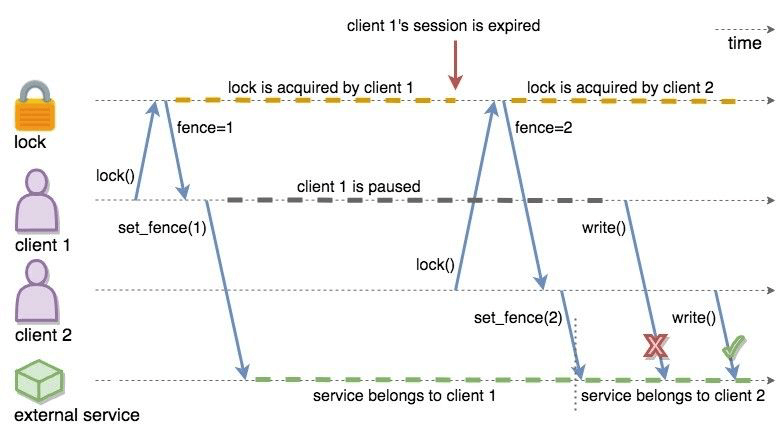FencedLock is a linearizable & distributed & reentrant implementation of
j.u.c.locks.Lock. FencedLock is accessed via CPSubsystem.getLock(String).
It is CP with respect to the CAP principle. It works on top of the Raft
consensus algorithm. It offers linearizability during crash-stop failures and
network partitions. If a network partition occurs, it remains available on at
most one side of the partition.
FencedLock works on top of CP sessions. Please see CP Sessions
section for more information about CP sessions.
By default, FencedLock is reentrant. Once a caller acquires the lock, it can
acquire the lock reentrantly as many times as it wants in a linearizable manner.
You can configure the reentrancy behavior via FencedLockConfig. For instance,
reentrancy can be disabled and FencedLock can work as a non-reentrant mutex.
You can also set a custom reentrancy limit. When the reentrancy limit is
already reached, FencedLock does not block a lock call. Instead, it fails
with LockAcquireLimitReachedException or a specified return value. Please
check the locking methods to see details about the behavior and
FencedLock Configuration section for
the configuration.
Distributed locks are unfortunately not equivalent to single-node mutexes
because of the complexities in distributed systems, such as uncertain
communication patterns, and independent and partial failures.
In an asynchronous network, no lock service can guarantee mutual exclusion,
because there is no way to distinguish between a slow and a crashed process.
Consider the following scenario, where a Hazelcast client acquires
a FencedLock, then hits a long GC pause. Since it will not be able to commit
session heartbeats while paused, its CP session will be eventually closed.
After this moment, another Hazelcast client can acquire this lock. If the first
client wakes up again, it may not immediately notice that it has lost ownership
of the lock. In this case, multiple clients think they hold the lock. If they
attempt to perform an operation on a shared resource, they can break
the system. To prevent such situations, you can choose to use an infinite
session timeout, but this time probably you are going to deal with liveliness
issues. For the scenario above, even if the first client actually crashes,
the requests sent by two clients can be reordered in the network and hit
the external resource in the reverse order.
There is a simple solution for this problem. Lock holders are ordered by a monotonic fencing token, which increments each time the lock is assigned to a new owner. This fencing token can be passed to external services or resources to ensure sequential execution of the side effects performed by lock holders.
The following diagram illustrates the idea. Client-1 acquires the lock first
and receives 1 as its fencing token. Then, it passes this token to
the external service, which is our shared resource in this scenario. Just after
that, Client-1 hits a long GC pause and eventually loses ownership of the lock
because it misses to commit CP session heartbeats. Then, Client-2 chimes in and
acquires the lock. Similar to Client-1, Client-2 passes its fencing token to
the external service. After that, once Client-1 comes back alive, its write
request will be rejected by the external service, and only Client-2 will be
able to safely talk to it.

You can read more about the fencing token idea in Martin Kleppmann’s
How to do distributed locking
blog post and Google’s Chubby paper.
FencedLock integrates this idea with the j.u.c.locks.Lock abstraction,
excluding j.u.c.locks.Condition. newCondition() is not implemented and
throws UnsupportedOperationException.
All of the API methods in the new FencedLock abstraction offer exactly-once
execution semantics. For instance, even if a lock() call is internally
retried because of a crashed CP member, the lock is acquired only once.
The same rule also applies to the other methods in the API.
